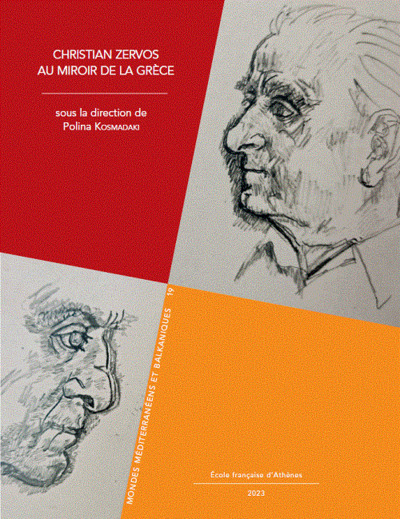- EAN13
- 9782869586253
- Éditeur
- École Française d'Athènes
- Date de publication
- 31 décembre 2023
- Collection
- MONDES MEDITERR
- Nombre de pages
- 271
- Dimensions
- 24 x 18,5 x 1,5 cm
- Poids
- 710 g
- Langue
- fre
Christian Zervos Au Miroir De La Grèce
Kosmadaki P.
École Française d'Athènes
Prix public : 37,10 €
Dans la revue comme dans les éditions Cahiers d’art, Christian Zervos a pris le parti de faire dialoguer des œuvres de domaines différents et de diverses époques historiques. Il envisageait l’art moderne en partant toujours de ses rapports à des formes universelles, provenant des arts dits « premiers » ou « archaïques » et des instincts « primordiaux » de l’humanité. Il jetait ainsi un nouveau regard sur les objets anciens dans le cadre d’une double démarche qui les réactualisait, tout en réinscrivant l’art moderne dans une perspective historique. La contribution de Zervos fut particulièrement importante pour la réhabilitation de l’art de la Grèce antique – notamment de l’art préclassique – ainsi que pour la redéfinition des civilisations anciennes et des formes d’art archaïques dans le cadre du modernisme. Dans ce volume, il est question de sa vision globale de la culture méditerranéenne, qui se forma « au miroir de la Grèce », à travers un double lien : au départ l’ancrage de sa démarche « moderniste » dans les principes des arts premiers du bassin méditerranéen, puis le retour au pays, dans les années 1950, pour renouer avec les « origines » de la culture méridionale poursuivant ainsi son projet de retracer les sources primitives du Sud européen (en Sardaigne, dans les Cyclades, en Crète). Ces textes retracent le développement de son goût pour ces périodes sans témoignages écrits et la poursuite de son projet de constituer un récit photographique des cultures du « Sud préhistorique ». In both the literary journal and the monographic publications of Cahiers d’art, Christian Zervos has chosen to bring together works from different fields and historical periods. His approach to modern art was always based on its relationship to universal forms, derived from the so-called “primitive” or “archaic” arts and the “primordial” instincts of humanity. He thus took a fresh look at ancient objects through a double process – updating them while placing modern art in a historical perspective. Zervos’ contribution was particularly important for the rehabilitation of ancient Greek art –especially pre-classical art– and for the redefinition of ancient civilizations and archaic art forms within the scope of modernism. This volume discusses his global vision of Mediterranean culture, which was formed “in the mirror of Greece”, through a double link, starting with the anchoring of his “modernist” approach in the principles of the primitive arts of the Mediterranean basin, and then returning to his homeland in the 1950s to reconnect with the “origins” of southern culture, thus pursuing his project of retracing the primitive sources of the European South (in Sardinia, the Cyclades, Crete). These texts trace the development of his interest in these periods that bear no written evidence, and the pursuit of his project to create a photographic account of the cultures of the “prehistoric South”.


















